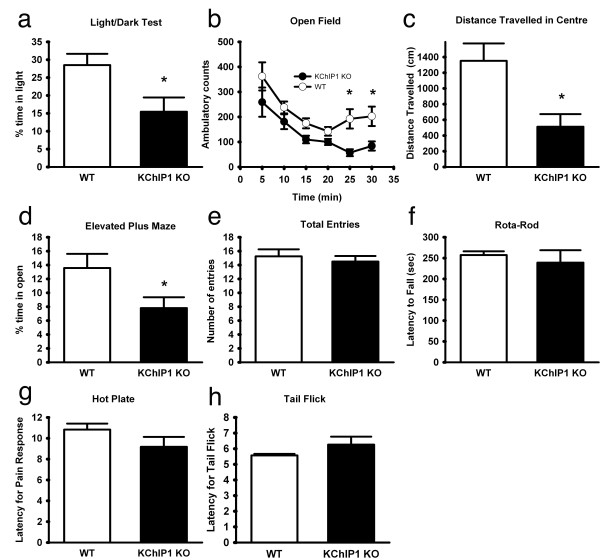Figure 7.
KChIP1 KO mice display enhanced anxiety-like behavior. a: In the light/dark test, KChIP1 KO mice (n = 6) spent significantly less time in the light compartment compared to WT controls (n = 5) (*P < 0.05.). b: In the open field test, KChIP1 KO mice had significantly less ambulatory counts compared to WT controls (n = 7). (* P < 0.02). c: KChIP1 KO mice (n = 9) travelled significantly less within the centre area compared to WT controls (n = 7). d: In the elevated plus maze test, KChIP1 KO mice (n = 9) spent significantly less time in the open arms to WT mice (n = 7), however e: KChIP1 KO mice (n = 9) made similar amount of entries into the arms compared to WT controls (n = 7) (* P < 0.05). f: In a rota-rod test for motor performance, KChIP1 KO mice (n = 6) exhibited similar falling latencies as WT control mice (n = 6). g: On a thermal hot plate test, KChIP1 KO mice (n = 6) displayed similar latencies for nociceptive behavior display as WT control mice (n = 6). h: In a tail flick assay, KChIP1 KO mice (n = 6) displayed similar latencies for tail flicks as WT control mice (n = 6).

